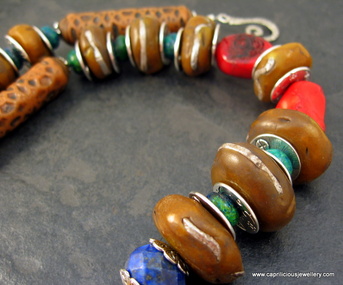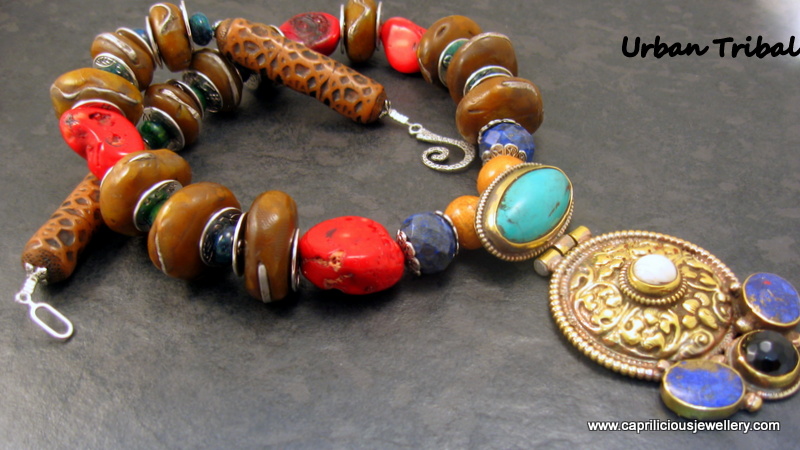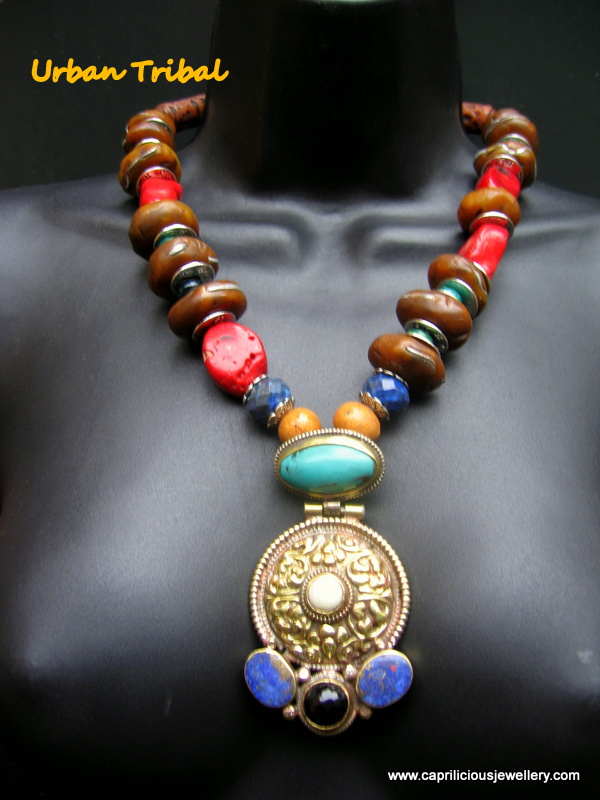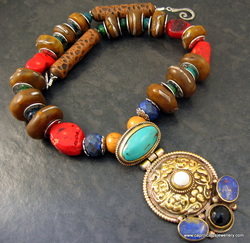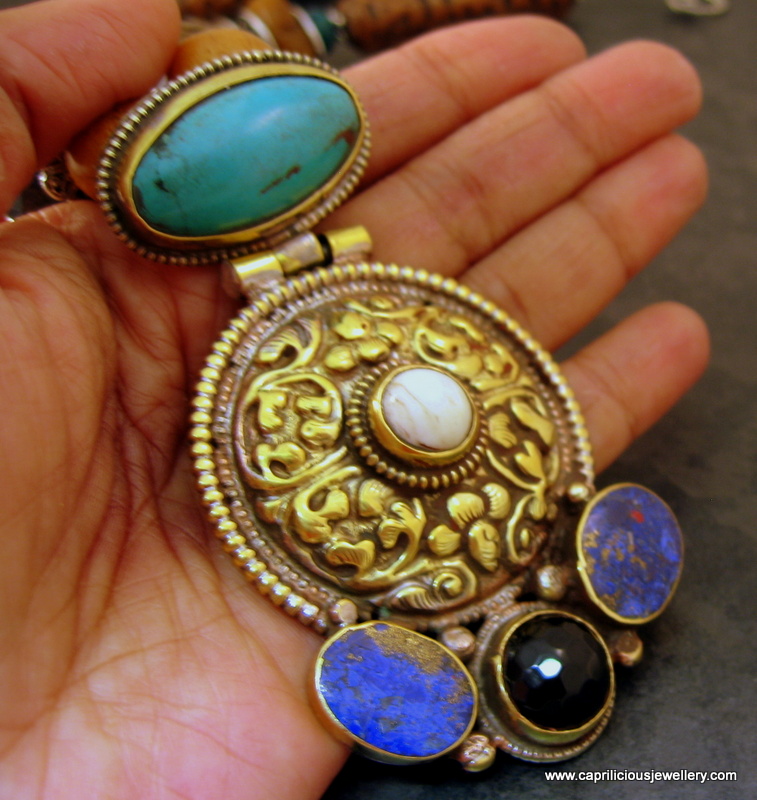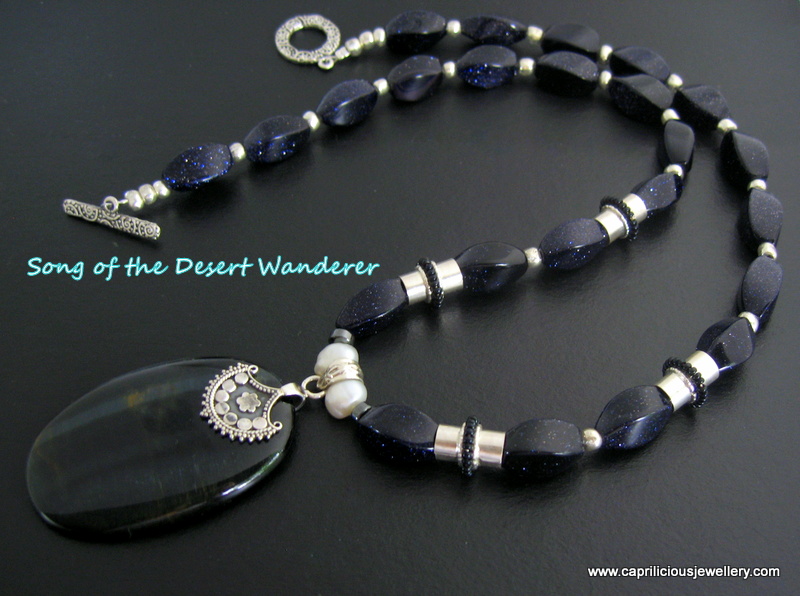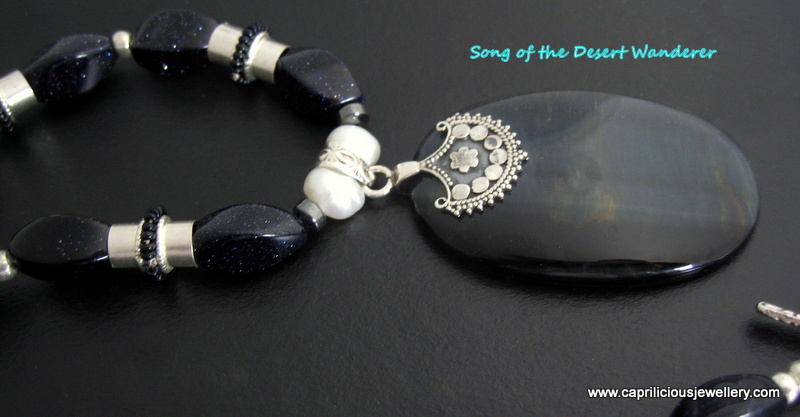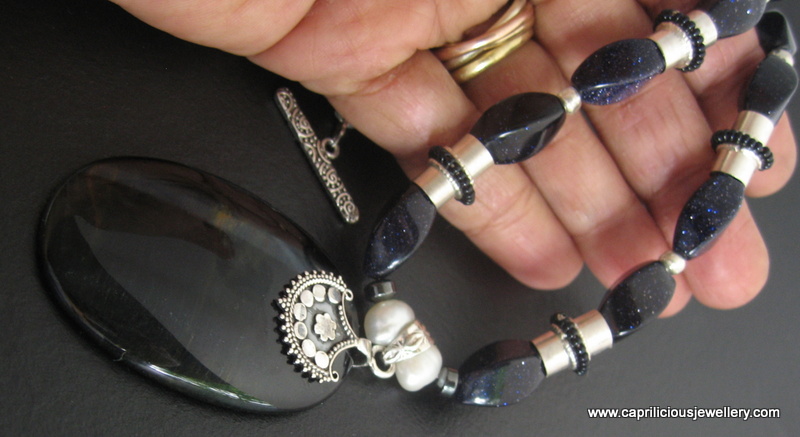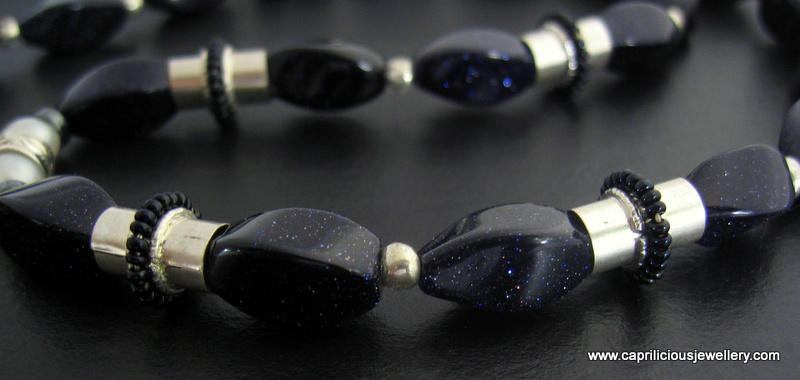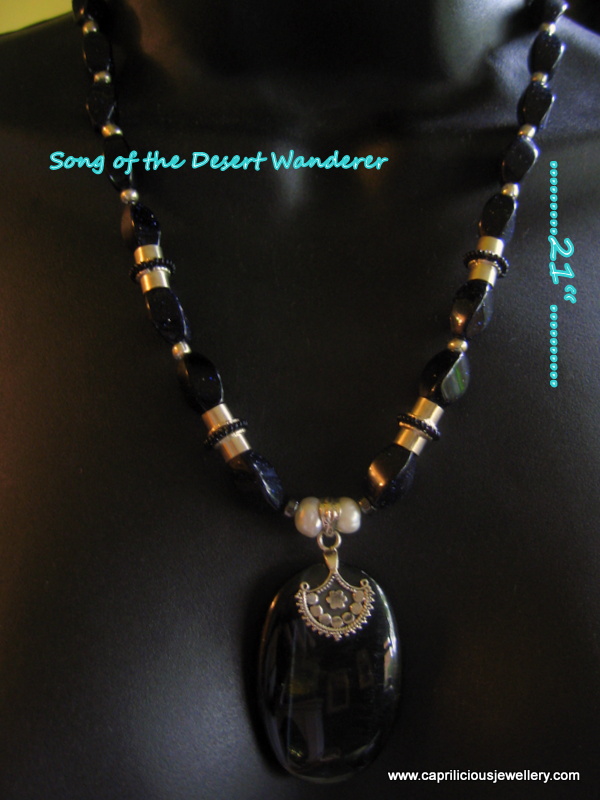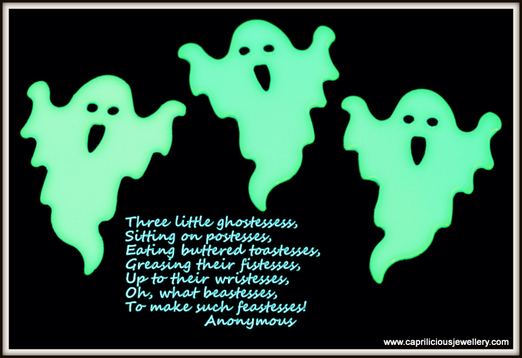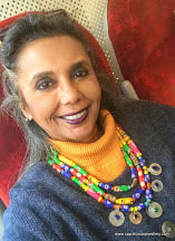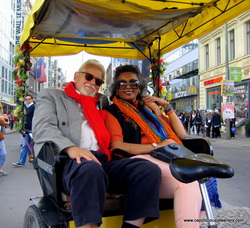|
Beautiful Handmade Statement Necklaces and other Fabulousness from Neena Shilvock - Inspirations and Designs From the Week Gone by
Hello, and welcome to this weeks blogpost from Caprlicious Jewellery. The week has been busy at the day job, with the annual August changeover of all the junior doctors in the hospital and I have had very little time to indulge myself with beads and baubles. However, I did have time over the weekend to play with polymer clay and I decided to make beads to put into a concept for a necklace I had in mind, which is unusual for me. I usually make random items, using one technique or another that catches my fancy, and hold on to the beads as part of my stash, until inspiration strikes. Leafing through the wonderful African imagery in Africa Adorned by Angela Fisher, a tribal piece - a large Nepalese pendant, on a necklace of faux amber, coral chunks, turquoise and lapis lazuli came to mind. Amber is a natural polymer made of resin from pine trees - it is prehistoric, and contains the remains of little insects who literally met a sticky end trapped in the resin, millions of years ago. Authentic amber is very, very expensive, and is sometimes called the 'Gold of the North', and there are many websites devoted to ways and means to distinguish between real and fake amber. Experts at the British Natural History Museum recently discovered that a bee preserved in amber, believed to be one of the oldest known examples of this particular species was in fact a fake, and probably no more than 150 years old. To add to this confusion, there exists beeswax amber, butterscotch amber, and copal - none of these are considered 'real' amber, but they are sold as such. There are many ways of making counterfeit amber, with glass, resin and polymer clay being used most commonly. I found websites that talked about what real African amber should look like, while I researched what I should aim for, to try and make my beads as authentic looking as possible. African amber beads are copal amber - which is actually real pine resin, but very, very recently formed - as in 'only' 150 years ago! Real copal beads are in different colours, with variations in colour within the same bead. They are semi transparent, with both shiny and matt areas, and are distressed and stained with age. Amber doesn't come from the Sahara of course, due to a paucity of ancient pine forests there. Amber traded to Africa was found on the shores of the Baltic Sea in northern Europe and shipped across, bundled with Venetian glass beads and sent across the Mediterranean to Tunis or Tripoli by European traders who used them as currency. The beads sometimes broke with age, and were repaired using wire. Armed with this research, I embarked on making the beads that went into 'Urban Tribal' with polymer clay and alcohol inks. After all, isn't it better to have faux amber, labelled as such and made by me with a bit of honest toil, than buying 'amber' and then finding out that it isn't the real thing? Urban Tribal The term Urban Tribe was coined by Ethan Watters, an American journalist - describing a group of individuals, usually young professionals living in large cities, sharing common interests (that were in general different from the interests of mainstream culture) that form communities to provide the emotional support of an extended family. I do so like that idea - with the semi breakdown of the extended family, especially for people like me, who live so far from their putative home, it is nice to think there is a 'tribe' of people out there, all rooting for me. Song of the Desert Traveller This necklace is inspired by Tuareg jewellery. The Tuaregs are a nomadic tribe in Mali, Libya, Senegal and Niger. They are semi matriarchal, and their artisans make the most beautiful silver jewellery. Young girls are given little necklaces of black beads called Tchatchat necklaces, usually glass, with multiple silver pendants and cylindrical silver spacer beads called Ismana beads. A hawk eye pendant set in silver, and some silver cylindrical beads from India were used in a necklace made with blue goldstone 'Sitara' beads to resemble a Tchatchat necklace. 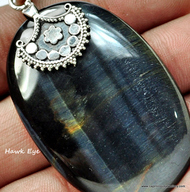 Hawk eye is a blue/grey version of Tiger eye, which of course, is golden yellow. There is a chatoyance deep within this beautiful stone, which is visible on movement in the light. This pendant is set in an ornate sterling silver crown, and the Sitara beads, which are a deep navy blue, with flecks of copper show it off beautifully. The Three Ghostessess During one of my sessions spent browsing the internet, I came across this poem - it was so cute, I decided I simply had to share it with you - I hope you like it. I wrote it on a Halloween cartoon of ghosts for maximum effect - enjoy! That's it for this week folks, catch you later, same time, same place, enjoy the week in the meantime
xx
1 Comment
|
Follow
|
